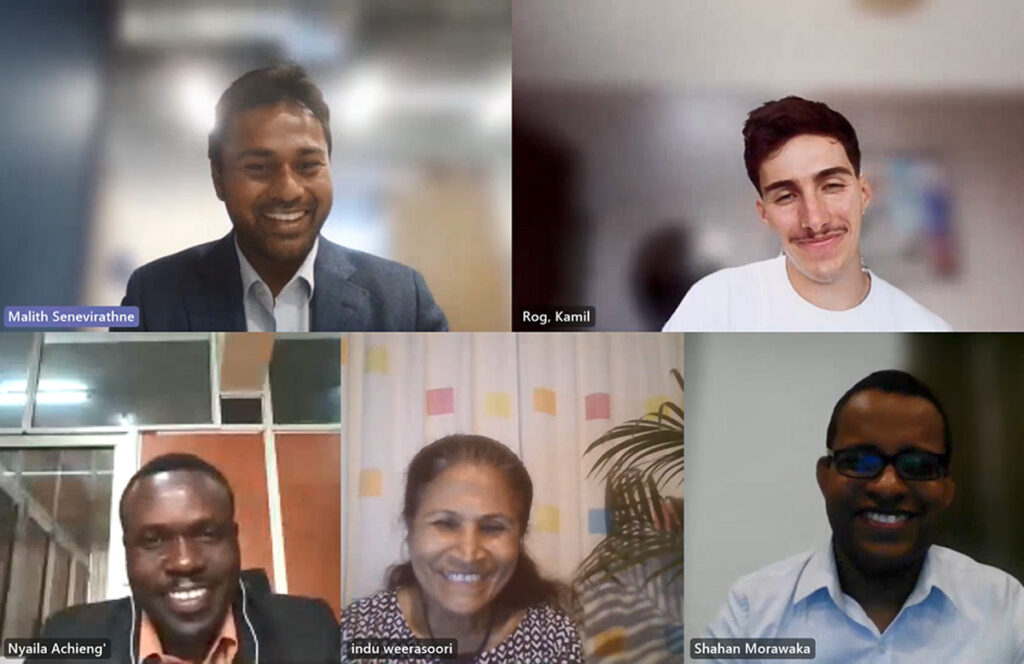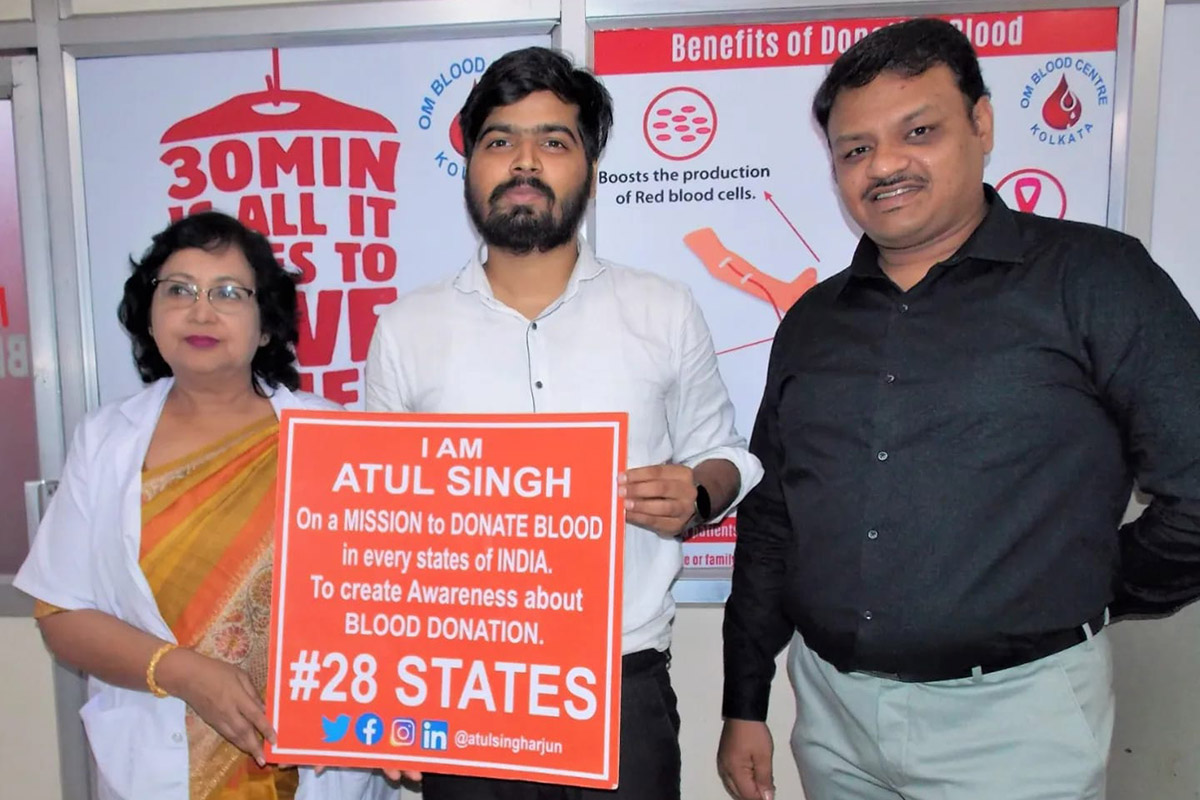Building Strong Cities: Best Practices and Toolkits for Planning Urban Resilience
July 16Commonwealth Association of Planners – Young Planners Network – Knowledge Sharing Workshop
Highlights: Experts Unite in Urgent Call to Mainstream Resilience and Citizen Engagement for Stronger Cities
During the workshop the experts highlighted the importance of mainstreaming resilience and citizen engagement for stronger cities. The discussion focused on key messages from the speakers, emphasizing the need for evidence-based research, nature-based solutions, innovation, and holistic planning approaches.
- Indu Weerasoori emphasized the significance of evidence-based research and consultation with diverse stakeholders to build resilient cities.
- Nyaila Achieng stressed the importance of incorporating resilience indicators into planning processes, ensuring that resilience becomes an integral part of development plans.
- Kamil Rog challenged the separation between humans and nature, advocating for the use of nature-based solutions to create sustainable cities.
- Shahan Morawaka called for investment in innovation and active citizen engagement to address urban challenges effectively.
This call to action highlights the urgent need for collaborative efforts to create stronger and more resilient cities by embracing resilience, evidence-based research, nature-based solutions, innovation, and citizen engagement.

1st workshop of the CAP-YPN capacity building series
The 1st workshop of the capacity building series – Building Strong Cities: Best Practices and Toolkits for Planning Urban Resilience was organized by the Commonwealth Association of Planners (CAP) – Young Planners Network on Thursday, 29th of June 2023. This online workshop was part of the Cities by Citizens programme and aims to provide young planners in the Commonwealth with valuable career development opportunities. The workshop provides a platform for peer learning, collaboration, and the exchange of ideas among planners, government officials, and other stakeholders. Through interactive sessions, participants are expected to gain new insights and skills related to urban resilience planning and design. The workshop also aims to raise awareness about the importance of planning for resilience and to empower participants to contribute to the building of strong and resilient cities in their own communities. This online workshop featured esteemed panellists and experts in the field, including:
Mrs. (Plnr) Indu Weerasoori – Indu is a Chartered Town Planner and fellow member of the Institute of Town Planners Sri Lanka (ITPSL). With a specialization in Urban Development, Urban Governance, and Resettlement, she brings extensive expertise to the workshop. Plnr. Weerasoori is the Vice President (South-West Asia) of the Commonwealth Association of Planners (CAP) and has served as the Past President of ITPSL and the Chairman of the Board of Education.
Mr Nyaila Achieng’ – Nyaila is an Urban and Regional Planner working as a Senior Urban and Regional Planner at Geodev Kenya Limited. With his experience and expertise in the field, he brings valuable insights into urban planning and resilience strategies.
Mr Kamil Rog – Kamil is a town planner who specializes in infrastructure development and currently works with the engineering consultancy Atkins. Previously, he developed green infrastructure strategies for Birmingham City Council. Kamil focuses on integrating nature-based solutions into the planning process, bringing valuable perspectives on ecosystem-based resilient urban development.
Mr Shahan Morawaka – Shahan is the Chairman of the Young Planners’ Forum Sri Lanka and holds the position of Minister of Finance and Infrastructure Development at the National Youth Parliament of Sri Lanka. With a strong background in urban planning and leadership, Shahan brings a unique perspective on the role of young planners in promoting urban resilience and inclusive decision-making.
The session was moderated by Mr. Malith Senevirathne (MITPSL), a researcher in the Global Disaster Resilience Centre, University of Huddersfield, UK and Co-chair, Research Committee, CAP Young Planners’ Network. The session was further enlightened by the thoughts of Ms Olafiyin Taiwo MRTPI, Doctoral Researcher, University College London, and Chair of the CAP Young Planners’ Network as well as Mr Will Steel MRTPI, Principal Consultant, Atkins, Lead, Cities by Citizens programme and co-chair, International Committee, CAP Young Planners’ Network.
Empowering Urban Resilience: Building Strong Cities through Shared Experiences
Building Resilient Cities: Unveiling the Power of Policies, Diverse Experiences, and Urban Planners
In the pursuit of resilient cities, the formulation of clear and robust policies plays a crucial role. Indu Weerasoori highlighted the significance of integrating policies across multiple sectors to address the complex challenges faced by urban areas. However, policy formulation alone is not enough; effective implementation strategies are essential. Weerasoori emphasized the importance of following a comprehensive project life cycle and planning process to lay a strong foundation for resilient urban development. Working collaboratively with diverse stakeholders is another key aspect emphasized by Weerasoori. Engaging with UN agencies, the private sector, civil society, and community groups allow planners to understand their needs and aspirations. Building strong partnerships and valuing the experiences of all stakeholders is vital for successful urban planning. Weerasoori encouraged young planners to actively participate in various stages of the planning process, broadening their understanding and equipping them with the necessary skills to address the evolving urban challenges. Weerasoori also emphasized the crucial role of urban planners in supporting local authorities. Providing technical assistance and sharing experiences with these agencies strengthens their planning capabilities. Understanding the private sector’s management-oriented nature allows planners to create innovative platforms aligned with sustainable development goals. By integrating strong policies, diverse experiences, and the expertise of urban planners, resilient cities can be realized. Through collaboration, stakeholder engagement, and support for local authorities, the vision of sustainable and resilient urban development can be achieved.
Conceiving Resilience and Navigating Complexity: A New Dimension in Planning
The webinar highlighted the challenges of mediating political interests, social welfare, and public expectations to achieve effective transformation and resilience in urban planning. Nyaila Achieng’ shared his experience in preparing regional, urban, and local plans in Kenya, emphasizing the complexity of the planning process. He emphasized that urban planners serve as mediators, balancing the diverse objectives and expectations of various stakeholders. They must navigate the political landscape while prioritizing social welfare and public interests to ensure successful plan implementation. A significant development in Kenya’s urban resilience landscape is the World Bank-supported program for five cities, including Nairobi, Mombasa, Kisumu, Nakuru, and Eldoret, to prepare urban resilience strategies. Nyaila highlighted the unique exercise of integrating resilience concepts into traditional planning practices. Resilience introduces a new dimension to planning, extending beyond land use and physical development considerations to incorporate strategies that enhance a city’s ability to withstand, recover and transform or grow in the face of shocks and stresses. The webinar emphasized the significance of knowledge sharing among planners, both young and senior. Achieng’ encouraged participants to embrace the evolving concept of resilience and its implications for planning practices. The exchange of experiences and lessons learned is essential for fostering innovation and adaptability in the face of complex urban challenges.
Revitalizing Nature: Unveiling the Power of Nature Recovery Networks and Green Infrastructure Strategies
Kamil Rog shared his experiences and insights, emphasising the need for a ‘Biophilic’ approach to design which returns to the natural systems of resilience which have adapted and evolved over millions of years. Green infrastructure plays a significant role in a Biophilic approach by utilising natural functions to provide benefits to society, a process known as ‘ecosystem services’. For instance, sustainable urban drainage systems (SuDS) have become popular in the UK to address resilience issues like flooding. In the UK, local governments set green infrastructure plans and strategies at a local level. Developers then aligns their proposals with these plans by incorporating green infrastructure elements into their projects. By contributing to the local authority’s vision, developers play a crucial role in delivering green infrastructure ambitions. This collaborative approach ensures the integration of green infrastructure within the overall urban development framework. Kamil highlighted England’s new policy system of Nature Recovery Networks, where local authorities or regional bodies create plans to establish a network to restore natural habitats in on a large spatial scale to improve biodiversity and provide ecosystem services. WENP shows an example of an early Nature Recovery Network. These networks identify existing green infrastructure, such as parks, woodlands, and wetlands, and propose where developers need to provide green corridors and patches to fill in the gaps and improve the natural features on their site. Through the Nature Recovery Networks, developers can contribute to restoration efforts on a larger scale beyond their redline boundary, providing a more impactful benefit from their development.
When Malith asked about differentiating infrastructure projects from green infrastructure projects, Kamil highlighted that green infrastructure forms an integral part of successful infrastructure development. For instance, when Atkins, a leading engineering consultancy firm, builds a highway, they seize the opportunity to create a linear corridor of grassland, meadow, or woodland alongside the road. Green infrastructure is therefore an additional benefit that complements the main infrastructure projects. This is an example how the use of public funds in infrastructure projects provides a ‘public good’, extending the benefits of a road scheme beyond the focus of road building and instead also providing biodiversity benefits by connecting not only people but also habitats.
Empowering the Future: Young Planners Shaping Urban Resilience and Inclusive Decision-Making
The moderator, Malith Senevirathne, engaged in a thought-provoking dialogue with Shahan Morawaka, who shed light on resource efficiency, the importance of youth involvement in decision-making, and the role of planners in sustainable real estate development. Shahan Morawaka acknowledged the limited opportunities for young people to actively participate in policy and decision-making processes. Shahan proposed granting young professionals’ real opportunities to engage in political decision-making, budget preparation, and development planning. By giving the younger generation a voice in shaping the future of their cities, urban resilience can be effectively addressed from the ground level. Shahan emphasized the responsibility of planners in understanding the importance of balancing economic viability, community needs, and sustainable development. As a bridge between urban planning principles and real estate development projects, Shahan stressed the significance of ensuring that development plans adhere to planning and designing guidelines. This approach enables the corporate sector to achieve its profit-oriented targets while promoting the well-being of communities and maintaining sustainable urban development. The Young Planners Forum aims to create awareness about the importance of urban planning and its role in economic recovery. Their project, “Rebuilding Sri Lanka Together,” focuses on designing island-wide workshop series to enhance the understanding of development planning and its contribution to overcoming economic crises. By emphasizing the need for well-prepared development plans for cities, the forum seeks to connect the recovery process with urban planning. Planners can play a vital role in guiding economic recovery efforts and contributing to a resilient and prosperous future.
Driving Change: Unveiling Cutting-Edge Tools and Best Practices for Future-proof Planning
Navigating the Future: Unleashing the Power of Scenario Development for Integrated Urban Resilience
Key insights were shared by Indu Weerasoori, emphasizing the integration of social resilience, disaster resilience, and economic resilience in urban planning, along with the active participation of communities and understanding of governance systems. Weerasoori highlighted the need to integrate various aspects of resilience, including environmental, social, and disaster resilience, in urban planning. She stressed that urban resilience encompasses the ability of cities to prepare, respond, and recover from crises, minimizing damage to public safety, health, economy, and security. Strategic interventions and planning tools play a vital role in achieving this integration. Identifying strategic interventions is essential in the planning process. Weerasoori emphasized the importance of aligning these interventions with the aspirations and demands of the community. Actively involving the community in the initial stages of planning through hazard mapping and collecting their experiences ensures a more comprehensive and effective approach. Innovative methods, especially with the involvement of youth and school children, can help change mindsets and foster ideas that address future challenges. Weerasoori emphasized the significance of considering different scenarios when planning for urban resilience, particularly in the context of climate change and its uncertainties. She called for improving social resilience as a priority, as it enables active community involvement in mapping hazard-prone areas and engaging in meaningful dialogue. By understanding the governance systems at local levels and promoting transparency, accountability, and the rule of law, planners can empower communities to actively participate in urban governance.
Harnessing Technological Innovations: Empowering Risk-Sensitive Planning for Resilient Cities
Nyaila Achieng’, an expert in urban planning, emphasized the multifaceted nature of resilience. It encompasses different dimensions, including socioeconomic factors, people, systems, places, and institutions. Conceptualizing and operationalizing resilience at the city level can be challenging. Furthermore, the availability and distinction between resilience data and planning data pose additional complexities. Achieng’ stressed the importance of utilizing technology, such as remote sensing and related data such satellite imagery, to enhance resilience planning. By analysing historical -remotely sensed- data and mapping risk-prone areas, planners can identify exposure to stresses and shocks and such as sea-level rise and floods. Spatial modelling tools such as web-based GIS can automate the process, allowing for global applicability. Achieng’ highlighted the need to incorporate risk factors into zoning regulations and planning decisions. Considering natural and human induced hazards while developing standards that inform building construction and infrastructure development, cities can become more resilient. Automated tools, including risk profiling index, GIS based risk mapping, enable planners to overlay data on risks on earthquake, floods and their return periods, impacts of such events that consequently aid in informed decision-making on actions that build resilience. Scenario building, which involves considering various hazards and risks, is crucial for effective resilience planning. Automated tools can facilitate scenario building, providing planners with datasets to inform their strategies. However, Achieng’ pointed out the lack of localized policy and legal frameworks in some regions which make the resilience planning uncontextualized and shaky. Planners often rely on existing tools, such as the Arup and Rockefeller’s City Resilience Index and Framework, City RAP Tool by UN- Habitat, City Strength Diagnostics by World Bank Group, Disaster Resilience Scorecard for Cities by United Nations Disaster Response and Recovery (UNDRR), adapting them to their local context. However, the localization and adoption need to be systematic and standardized to rationalize the diversity. In his concluding submission on this matter, Nyaila stated that implementing innovative solutions, speakers highlighted the importance of establishing a strong baseline through evidence-based planning. Real data serves as the foundation for effective automation and innovation in resilience strategy development and action planning.
Biodiversity Net Gain: Unlocking Nature’s Potential for a Sustainable Future
Kamil focused on nature-based solutions and their role in resilience planning. While traditional resilience strategies often address specific disasters like droughts and floods, Kamil emphasized the silent crisis of biodiversity decline. Biodiversity, comprising the variety of plant and animal life in habitats, is essential for maintaining human systems such as air quality regulation and food production. However, urbanization is encroaching upon and eradicating vital habitat spaces. To combat this issue, the United Kingdom has implemented a policy mechanism known as biodiversity net gain. This policy applies to housing and commercial developments, with plans to extend it to infrastructure projects as well. Biodiversity net gain aims to restore habitats and enhance the resilience of the entire UK landscape. The approach involves assessing the baseline of habitat before development commences. The key objective of biodiversity net gain is to improve the quality and condition of habitats, even if the overall area is reduced. For instance, when half of a field is converted into housing, the remaining portion is transformed into meadows, woodlands, or wetlands to enhance biodiversity. The policy envisions a 10% improvement in habitat quality for each development project, ensuring an overall improvement across the country. Crucially, biodiversity net gain is designed to connect with natural recovery networks. By integrating these networks into the planning process, development projects can contribute to the broader goal of enhancing biodiversity and ecological resilience.
Empowering Communities: Unleashing the Power of Active Citizen Participation in Resilient Planning
The discussion with Shahan Morawaka shed light on the importance of active citizen participation in building resilient cities. It was recognized that resilience goes beyond physical infrastructure and requires fostering connections and community engagement. Engaging the public from the early stages of planning was emphasized as crucial, allowing planners to understand community aspirations and experiences. Visualization and collaborative workshops, such as design charrettes, were recommended as effective tools for involving community members in the development of design solutions and strategies. Accessibility and inclusivity were highlighted as key aspects of public engagement. To ensure participation from diverse populations, information and engagement materials should be made accessible through user-friendly digital platforms, mobile apps, and translation into different languages. Feedback and evaluation mechanisms were deemed essential, providing channels for the public to provide input and receive feedback on how their opinions influenced the planning process. Interactive games and simulations enable community members to experience the challenges and trade-offs involved in resilience planning, facilitating more effective input. Storytelling and community narratives were also emphasized as valuable sources of insight, encouraging community members to share their personal stories related to resilience. Furthermore, the webinar stressed the importance of youth engagement in resilient planning. Young people bring innovative approaches and technological familiarity to the table. By fostering connections, promoting inclusivity, and leveraging innovative strategies, active citizen participation can play a vital role in building resilient cities.
Call to action: Experts Urge Mainstreaming Resilience and Citizen Engagement for Stronger Cities
During the call to action, the speakers emphasized the need for mainstreaming resilience, evidence-based research, nature-based solutions, innovation, and citizen engagement. The discussion highlighted key messages from speakers urging planners and decision-makers to adopt a holistic approach to urban development.
Evidence-based research and consultation: Indu Weerasoori underscored the significance of evidence-based research and the dissemination of information across sectors. She emphasized the importance of consulting with diverse stakeholders, including professionals and representatives from different sectors of society. Weerasoori recommended continuous honesty in sharing information and the adoption of automation as key elements for building resilient cities.
Conceiving resilience for effective planning: Nyaila Achieng’ stressed the importance of mainstreaming resilience into traditional planning approaches. She highlighted the need to incorporate resilience indicators and indices into data components that inform planning processes. By doing so, planners can ensure that resilience becomes an integral part of development plans, fostering stronger and more sustainable cities.
Address the dualism of human versus nature: Kamil Rog urged a shift in perspective, challenging the notion of a separation between society and the natural environment. He emphasized that humans are part of the larger system and can leverage nature-based solutions that have been established over millions of years. By aligning with natural systems, cities can create sustainable solutions and break away from the dualism of humans versus nature.
Investing in innovation and citizen engagement: Shahan Morawaka emphasized the need to invest time, money, and innovation in overcoming urban challenges. He emphasized the pivotal role of young people in technological advancements and the importance of leveraging innovation to develop sustainable solutions. Shahan called for active participation in decision-making processes, advocacy, and activism to address urban challenges effectively.
The insights gained from this webinar will play a pivotal role in informing and empowering the Cities by Citizens program. The expert discussion served as a catalyst, urging planners and decision-makers to prioritize resilience, evidence-based research, nature-based solutions, innovation, and citizen engagement. By integrating resilience into planning approaches, embracing nature-based solutions, fostering innovation, and involving citizens in decision-making, cities can chart a path towards strength and sustainability. The upcoming Cities by Citizens programme will further emphasize the significance of citizen-led city planning, ensuring that urban development aligns with the aspirations and needs of the people who call these cities home. The knowledge and perspectives shared in this workshop will guide and enlighten the implementation of the program, fostering inclusive and resilient urban environments that truly reflect the values and desires of the citizens they serve.
Reported by:
Malith Senevirathne
Co-chair, Research Committee, CAP Young Planners’ Network
Researcher, Global Disaster Resilience Centre, University of Huddersfield, UK
Steering Committee Member, Commonwealth Youth for Sustainable Urbanisation Network
Corporate Member, Institute of Town Planners Sri Lanka
Read more:
CAP Young Planners’ Network –
https://www.commonwealth-planners.org/young-planners
https://www.linkedin.com/company/capyoungplannersnetwork/
Cities by citizens programme – Launch event on Thursday, July 20, 2023, from 11:00 AM to 12:30 PM (BST)
Register for the event – https://lnkd.in/dNwmJfYD
Commonwealth Youth for Sustainable Urbanisation –
https://commonwealthsustainablecities.org/youth/
https://www.linkedin.com/company/commonwealth-youth-for-sustainable-urbanisation/




